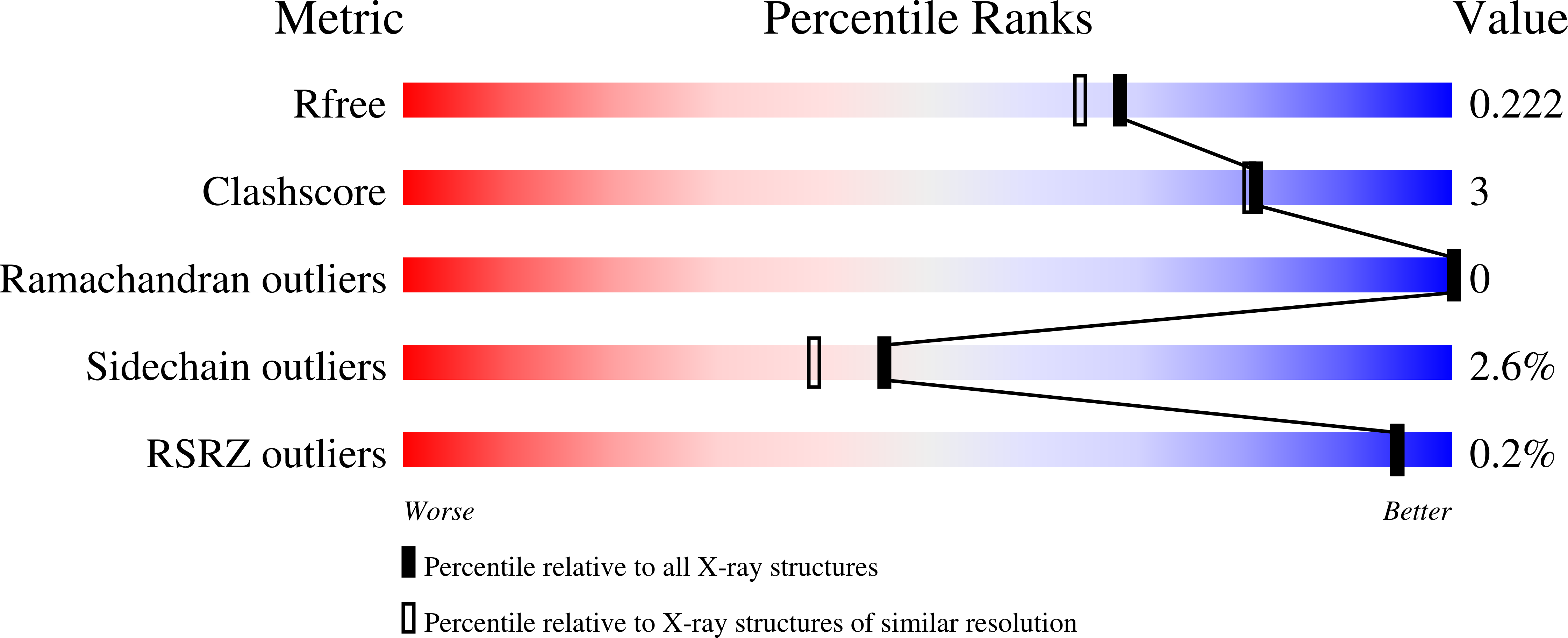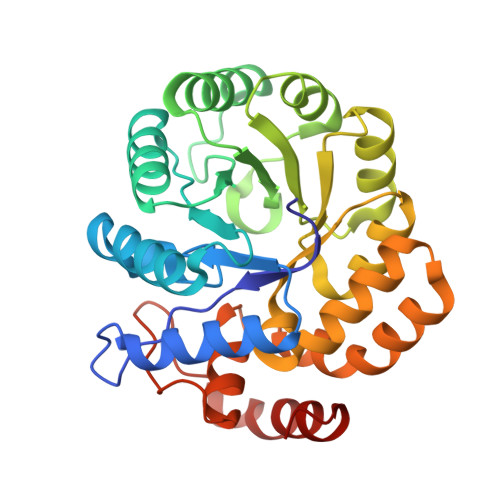Identification of two dihydrodipicolinate synthase isoforms from Pseudomonas aeruginosa that differ in allosteric regulation.
Impey, R.E., Panjikar, S., Hall, C.J., Bock, L.J., Sutton, J.M., Perugini, M.A., Soares da Costa, T.P.(2020) FEBS J 287: 386-400
- PubMed: 31330085
- DOI: https://doi.org/10.1111/febs.15014
- Primary Citation of Related Structures:
6P90 - PubMed Abstract:
Pseudomonas aeruginosa is one of the leading causes of nosocomial infections, accounting for 10% of all hospital-acquired infections. Current antibiotics against P. aeruginosa are becoming increasingly ineffective due to the exponential rise in drug resistance. Thus, there is an urgent need to validate and characterize novel drug targets to guide the development of new classes of antibiotics against this pathogen. One such target is the diaminopimelate (DAP) pathway, which is responsible for the biosynthesis of bacterial cell wall and protein building blocks, namely meso-DAP and lysine. The rate-limiting step of this pathway is catalysed by the enzyme dihydrodipicolinate synthase (DHDPS), typically encoded for in bacteria by a single dapA gene. Here, we show that P. aeruginosa encodes two functional DHDPS enzymes, PaDHDPS1 and PaDHDPS2. Although these isoforms have similar catalytic activities (k cat = 29 s -1 and 44 s -1 for PaDHDPS1 and PaDHDPS2, respectively), they are differentially allosterically regulated by lysine, with only PaDHDPS2 showing inhibition by the end product of the DAP pathway (IC 50 = 130 μm). The differences in allostery are attributed to a single amino acid difference in the allosteric binding pocket at position 56. This is the first example of a bacterium that contains multiple bona fide DHDPS enzymes, which differ in allosteric regulation. We speculate that the presence of the two isoforms allows an increase in the metabolic flux through the DAP pathway when required in this clinically important pathogen. DATABASES: PDB ID: 6P90.
Organizational Affiliation:
Department of Biochemistry and Genetics, La Trobe Institute for Molecular Science, La Trobe University, Bundoora, Australia.
















